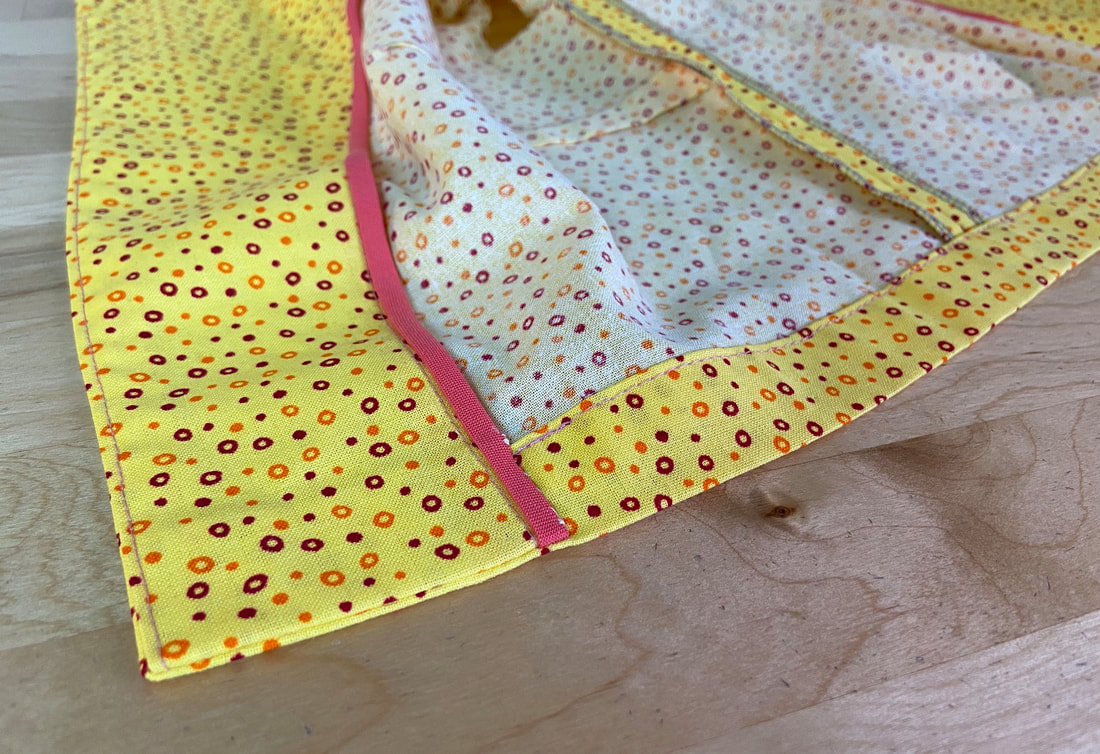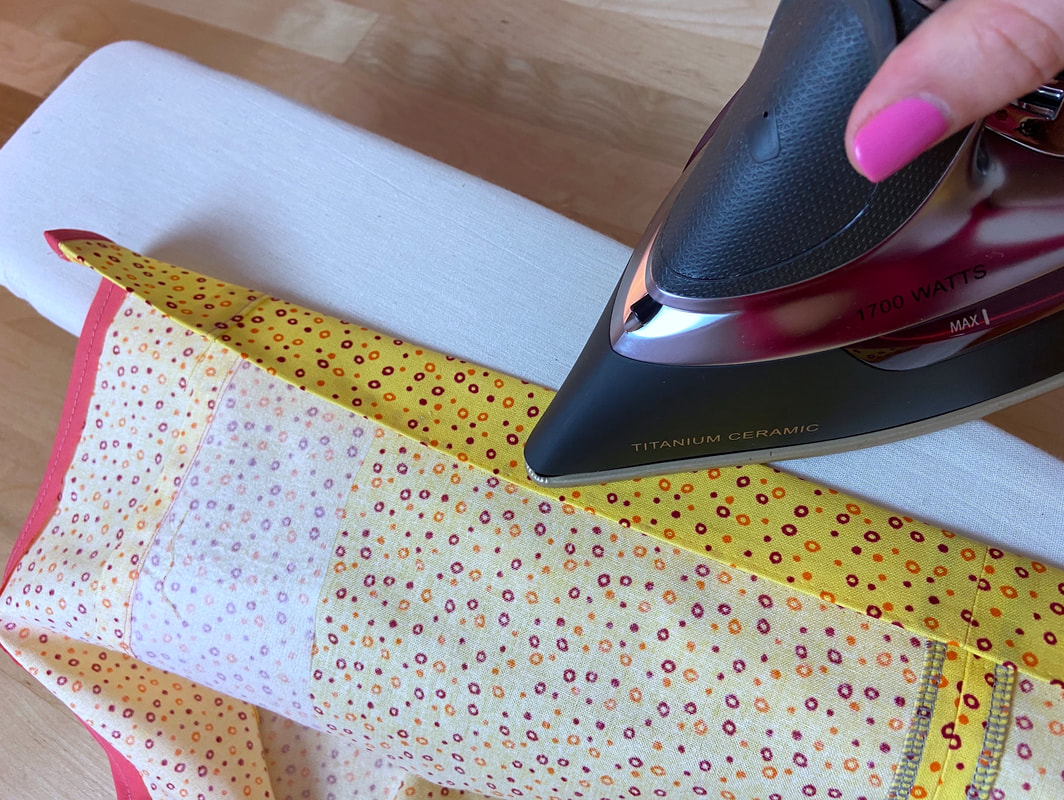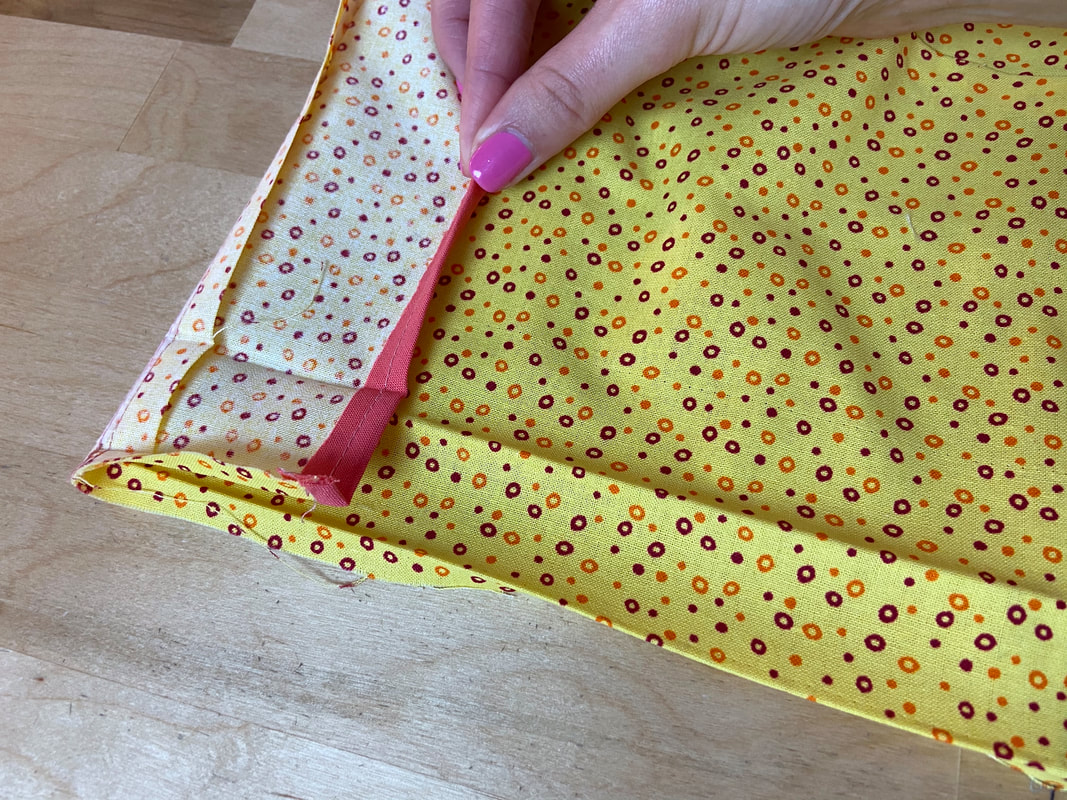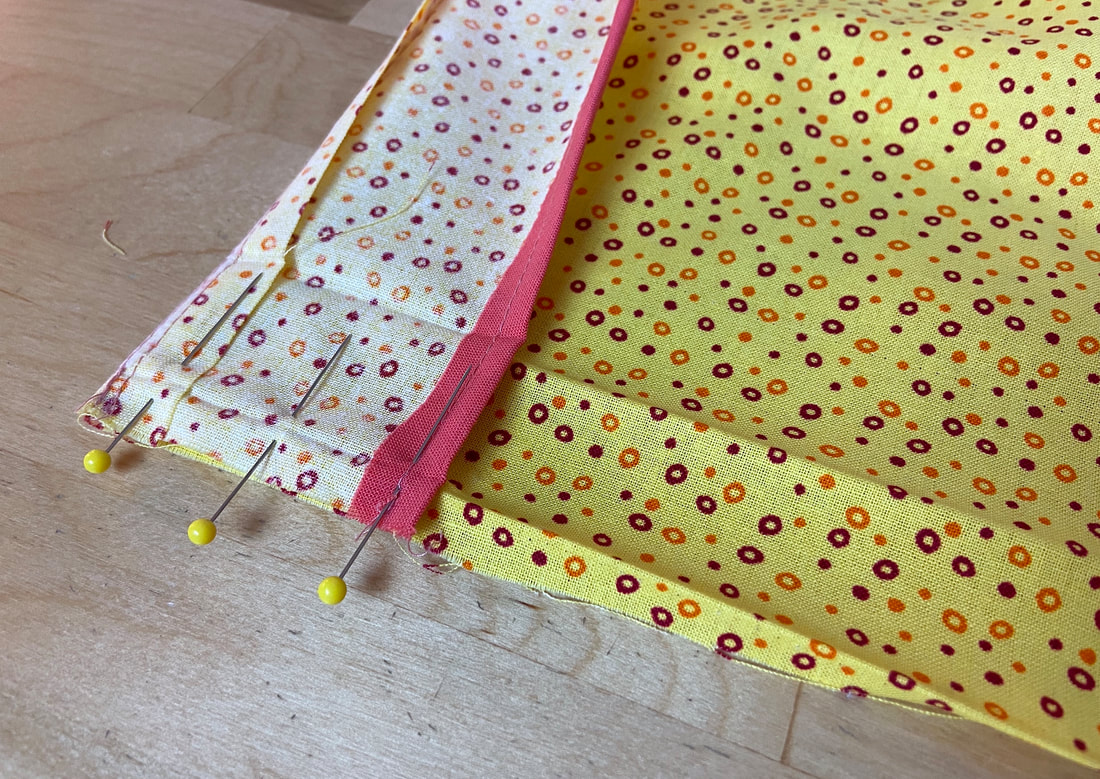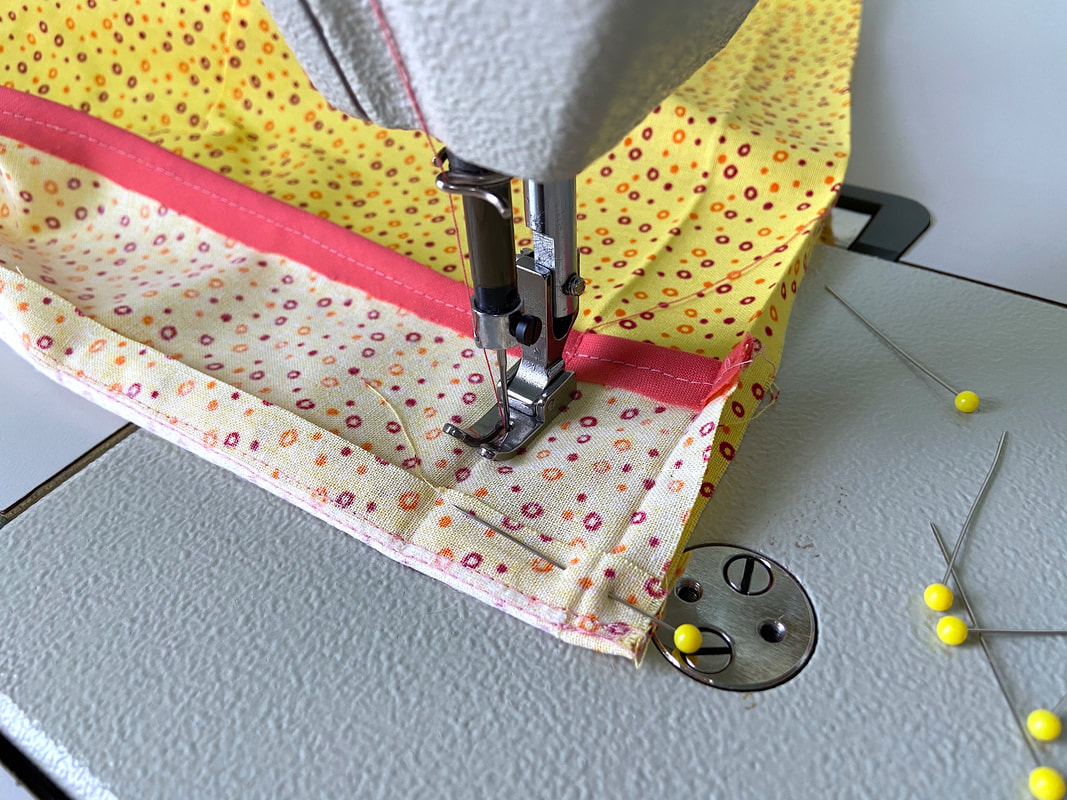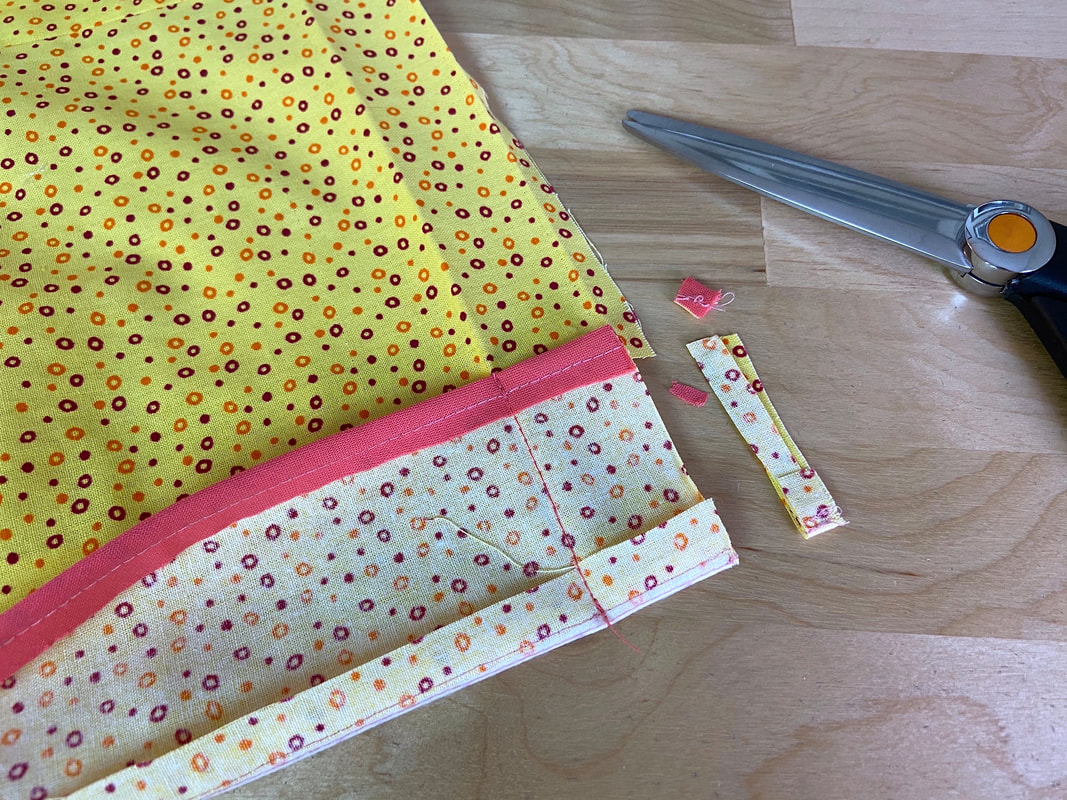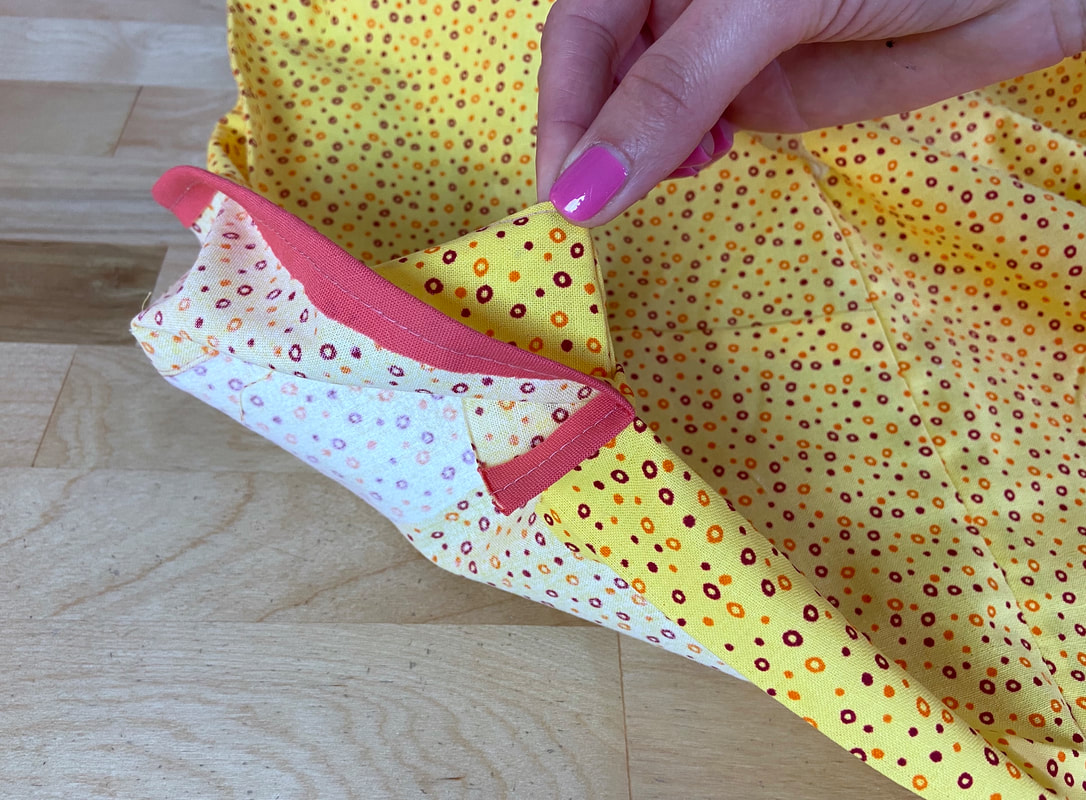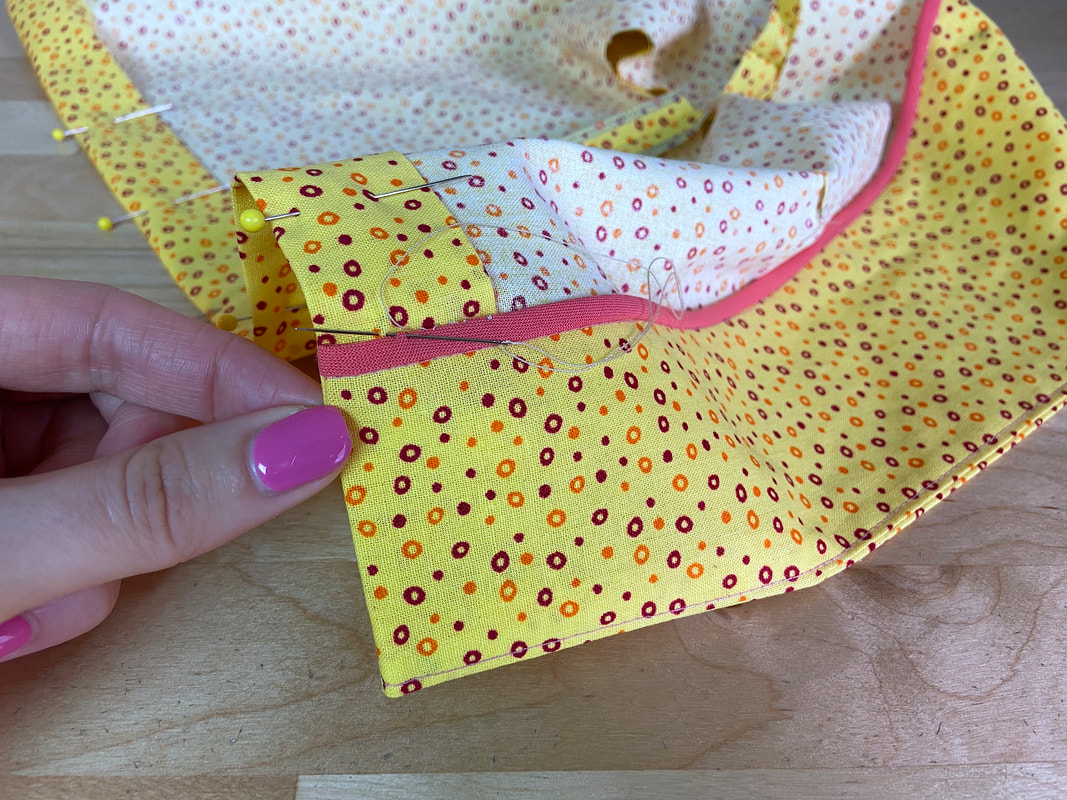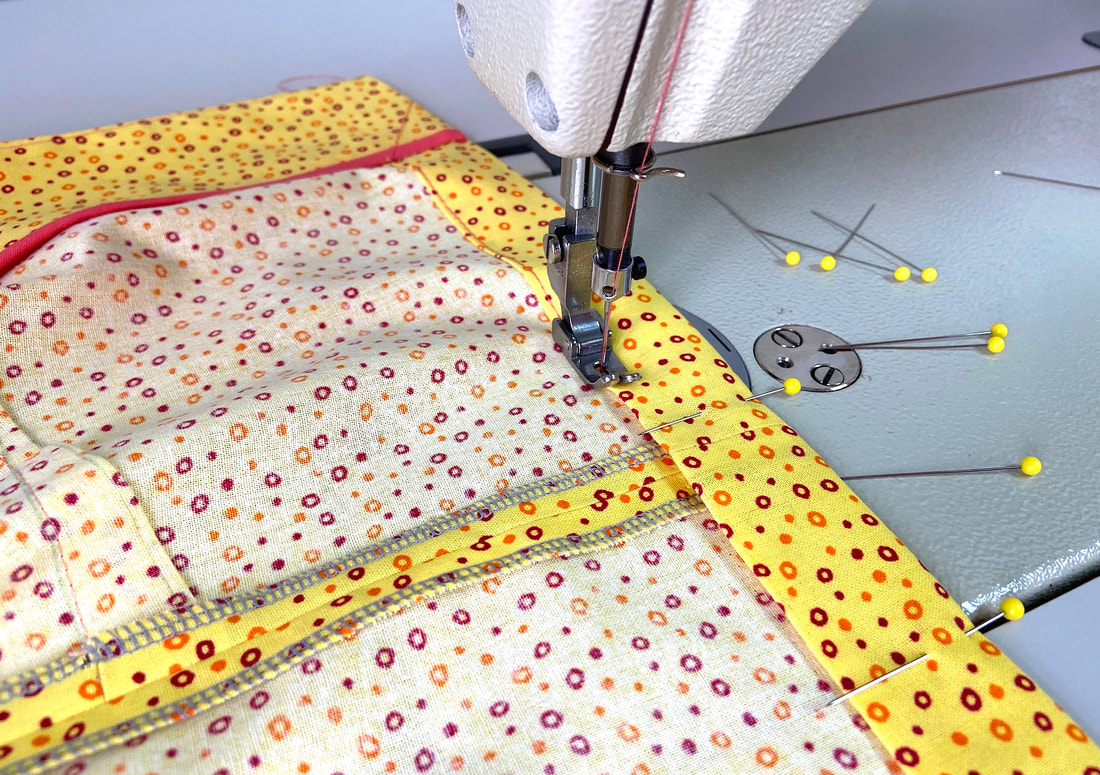Mini Tutorial: How To Finish A Faced Hemline Corner By Machine
You'll find yourself finishing faced corners when sewing open front garments like coats, jackets and tailored cardigans. A garment opening facing naturally intersects the hemline. It requires a few special steps to ensure that the finished facing blends into the garment's hem and its vertical edge to create a clean, well-defined corner.
While you can finish a faced corner by hand, you may prefer the faster option of sealing the facing edges by machine. After all, this is considered an industry standard and will save you a bit of time in the sewing process, especially of you are not particularly fond of hand stitching.
Before proceeding to finishing the faced hem corner, it is essential that the facing is fully stitched to the garment's vertical edge and the facing's open inner edge is encased with the finish of your choice.
In this example, the garment is unlined. The facing edge is finished with a Hong Kong application using a contrast bias fabric strip.
Before proceeding to finishing the faced hem corner, it is essential that the facing is fully stitched to the garment's vertical edge and the facing's open inner edge is encased with the finish of your choice.
In this example, the garment is unlined. The facing edge is finished with a Hong Kong application using a contrast bias fabric strip.
1. Start by extending the facing layer away from the garment, and double fold the garment's hem allowance inward (toward the wrong side of the garment) to encase the hem's raw edge. The second and final fold should correspond to the garment's final hemline.
Iron as you fold to crease the folded edges.
Note: It is easiest to apply each fold one at a time. Start the initial fold at 1/4" in.
Iron as you fold to crease the folded edges.
Note: It is easiest to apply each fold one at a time. Start the initial fold at 1/4" in.
2. Next, flip the facing over the garment's opening edge such that the facing's right side is touching the garment's right side as shown.
3. Align the matching hem allowance edge and insert pins perpendicular to the edges to keep the layers perfectly aligned. The facing's crease lines should match those on the rest of the garment layer.
4. Following the top crease line (hemline) as a guide, stitch the facing to the garment layer underneath stitching from the face side as shown. It helps to backstitch at the beginning and end of the stitch to prevent the seam from unraveling in the steps to follow.
5. To eliminate excess and ensure an easy folding process for the rest of the garment's hem, trim the top portion of the seam allowance within the facing area following the top crease line as a guide.
6. Flip the facing back in its natural position on the wrong side of the garment, and pull the finished corner out to expose the facing's bottom seamline. This seam should blend smoothly into the garment's hemline fold, falling naturally into position. The crease pre-folded in Step 1 helps in this instance.
7. Insert pins perpendicularly through the folded hem allowance layer, and seal the open portion of the facing with a slipstitch as shown above. A slipstitch is applied through the folded edge of the facing then catching 1-2 threads from hem allowance layer underneath.
8. Last but not least, finish the rest of the hem with the technique of your choice. In this instance, the double folded hem allowance is topstitched from the wrong side of the garment following the top (open) folded edge as a guide.

